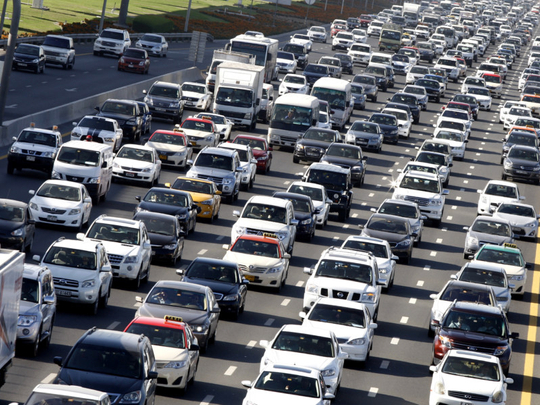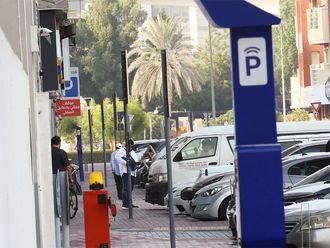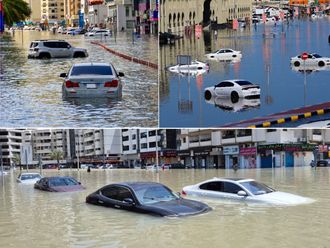
Dubai: For every two people in Dubai, there is a vehicle, putting vehicle density in the city higher than some of the biggest urban centres in the world.
According to stats provided by the Roads and Transport Authority, Dubai’s vehicle density of 540 per 1,000 people is the highest in the region and one of the highest in the world.
The number of vehicles in Dubai has doubled in the last eight years from 740,000 at the end of 2006 to 1.4 million at the end of 2014, an average annual increase of 8.2 per cent, which is also one of the highest in the world.
“At 8.2 per cent, the average annual increase of vehicles in Dubai is very high. If this same annual increase rate continues in future, the number of registered vehicles in Dubai can reach around 2.22 million vehicles in the year 2020,” said Nasser Abu Shehab, Director of Strategic Transport Planning at RTA.
Adding to the cars registered in Dubai, studies conducted by RTA show that around 450,000 vehicles enter Dubai on an average daily, with the city welcoming 40,000 vehicles in the morning peak hour every day.
The majority of these vehicles — around 33,500 in the morning peak hour and 370,000 on an average weekday — enter Dubai from the northern emirates.
Abu Shehab said the car ownership rate in Dubai is higher than many American and European cities, with places like Vienna, New York, and London having 386, 305, and 213 vehicles per 1,000 people, respectively.
Asian cities such as Singapore and Hong Kong have much lower rates of around 101 and 63 cars per 1,000 people, respectively.
The increase in private vehicles in Dubai has led to increasing traffic congestion despite massive expansion in roads and other infrastructure.
“According to international practices, the overall congestion level in a city is measured by certain indicators, which include average speed and travel time index [TTI]. The latter is more widely used and it represents the ratio of the average travel time within peak traffic hours to the average travel time during off-peak hours. Hence higher values of this indicator represent higher levels of congestion. The TTI in Dubai measured at main roads is equivalent to 1.69,” said Abu Shehab.
Dubai’s congestion index is relatively higher than or similar to some of the most congested cities in the world.
The TTIs calculated based on evening peak traffic conditions in Los Angeles, Seattle, San Francisco, and Houston in USA are 1.75, 1.68, 1.66 and 1.61, respectively. Similar indexes in Vancouver, Toronto, and Ottawa in Canada show 1.7, 1.63 and 1.61, respectively.
Among the European cities, Stockholm, Paris, and London have TTI index values of 1.66, 1.65 and 1.63, respectively.
Dubai has expanded it’s infrastructure extensively since 2006, when the congestion level was even higher, causing a loss of Dh5 billion due to loss in time and fuel.
“In 2006, Dubai had a road network of 8,715 lane-kilometre, which expanded to 12,454 lane-kilometre in 2013 and the network continues to expand every day. Also a state-of-the-art rail network of 86 km of tracks and 60 stations, with 75 km and 49 stations for Metro as well as 11 km and 11 stations for Tram have been built in a bid to improve the traffic situation,” added Abu Shehab.
He added that Dubai is working with federal authorities to come up with ways to restrict ownership of private vehicles, along with other ways of reducing congestion on roads.












